Last Updated: July 29, 2019 Nidhi Singh
An iconic figure of Sakyamuni Buddha is enough to perceive the grandeur of this historical leader who influenced the social and political frame of India. There was an unprecedented charm in Buddhist teachings and Buddhist philosophy, something that is as relevant then as it is now. If you haven’t got a chance, to read or learn about Buddha, this is your chance to know him and connect to him, the way you have not thought so far. Stay with us, as we take you in the life of one of the most influential people in the world that walked on the face of the earth in millions of years.
What Do We Know about the Historical Buddha?
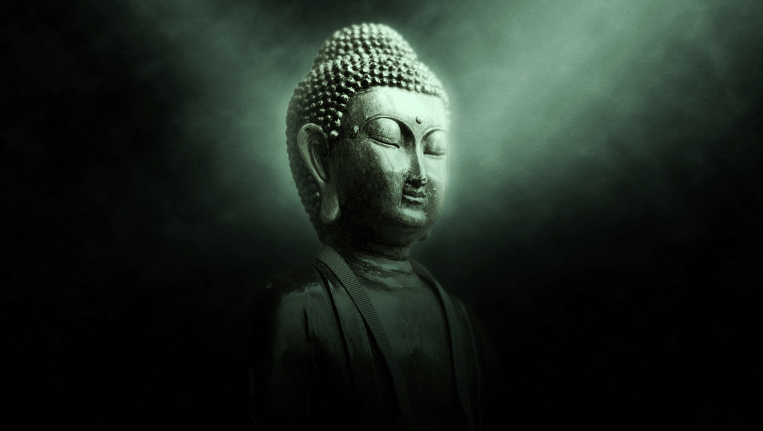
No written records about the birthday of Gautam Buddha were found from his lifetime or from the one or two centuries thereafter. However, most people accept that this one of the great spiritual gurus lived, taught, and founded a monastic order during the Mahajanapada era during the reign of Bimbisara (c. 558 – c. 491 BCE, or c. 400 BCE), the ruler of the Magadha empire. He died during the early years of the reign of Ajatasatru, who was the successor of Bimbisara. Another widely accepted time frame for his life is between 563 BCE and 483 BCE. More recently his death is dated between 411 and 400 BCE, while at a symposium held in 1988, the majority of those who presented definite opinions gave dates within 20 years either side of 400 BCE for the Buddha’s death. These alternative chronologies, however, have not been accepted by all historians. Although, birth anniversary of Gautam Buddha or Buddha Jayanti is celebrated on May 12 each year and is a major Buddhist festival.
The evidence of the early texts suggests that Siddhārtha Gautama/Buddha was born into the Shakya clan, a community which was inhabiting on the periphery of the eastern Indian subcontinent. According to Buddhist tradition, this place was called Lumbini (in modern-day Nepal). He was raised in Kapilvastu, the Shakya capital, which may have been either the present day Tilaurakot in Nepal or Piprahwa in India.
Parents:
Gautama was born as a Kshatriya, the son of Suddhodana, elected chief of the Shakya clan, whose capital was Kapilavastu. His mother’s name was Maya (Mayadevi) and she was a Koliyan princess. Legend has it that, on the night Siddhartha was conceived, she dreamt that a white elephant with six white tusks entered her right side. As was the Shakya tradition, when Queen Maya became pregnant, she left for Kapilavastu (her father’s kingdom) to give birth. However, Gautama is said to have been born en route Lumbini, in a garden beneath a sal tree. Thus, the birthplace of Buddha is Lumbini, which is in modern-day Nepal.
Biographical Source:
The sources for the life of Buddha sometimes conflict with the traditional biographies which include:
- Buddhacarita which is the earliest biography and is also an epic poem written by the famous poet Asvaghosa in the 1st century CE.
- The Lalitavistara Sūtra is the next oldest biography on Gautam Buddha, it dates back to the 3rd century CE.
- The Mahavastu from the Mahasamghika Lokottaravāda tradition is another major biography which was probably composed in 4th century CE.
- The exhaustive Dharmaguptaka biography of the Buddha is entitled the Abhiniskramana Sutra, and one can also find several Chinese translations of this dating between the 3rd and 6th century CE.
- The last composition, Nidanakatha by Buddhaghoṣa is from the Theravada tradition in Sri Lanka and dates back to the 5th century.
Other important sources of information pertaining to the life of Gautam Buddha are Jataka tales, the Mahapadana Sutta, and the Achariyabhuta Sutta.
The Story of the Making of Gautam Buddha from Siddharth Gautam
Born to Shakya Chief of Kapilvastu, Suddhodana, and Queen Maya, the daughter of the king of Lumbini, Buddha has a story that everyone should listen to. It is believed he was born en route Lumbini, under a sal tree. The infant was given the name Siddhartha which meant “he who achieves his aim” in a ceremony that took place after 5 days of his birth in which 8 Brahmins scholars were invited to read the future.
They all gave a dual prediction that the baby would either become a great king or a great holy man except for the youngest Brahmin Kondanna who unequivocally predicted that Siddhartha would become a Buddha.
A Sheltered Childhood and Youth

King Suddhodana, wishing for his son to be a great king, shielded him from any contact with human suffering as well as religious teachings. It was after spending 29 years as the prince of Kapilavastu, Siddharth finally got a glimpse of the real world outside. It so happened that Gautam decided to meet his subjects, and in that attempt, he saw an aged man for the first time. His charioteer, Channa explained to him that all people grew old. In further trips, he encountered a diseased man, a decaying corpse, and an ascetic. His comprehension of the world suggested that he could overcome all this suffering by meditation and becoming an ascetic and thus, he decided to leave the royal responsibilities and family to attain enlightenment.
Buddha’s Enlightenment
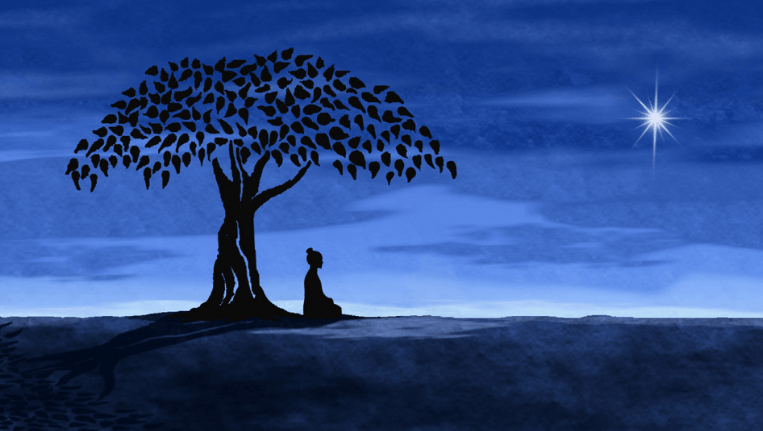
After leaving the palace, Buddha went from place to place over a period of 6 years, learning and mastering the technique of meditation. He once came to a point where he starved himself but in return gained no spiritual awakening. Finally, after meditating for 49 days under the Bodhi tree in Bodhgaya, Bihar, Siddharth is said to have become what was prophesied for him – Buddha – the Awakened One.
What Did the Buddha Teach?
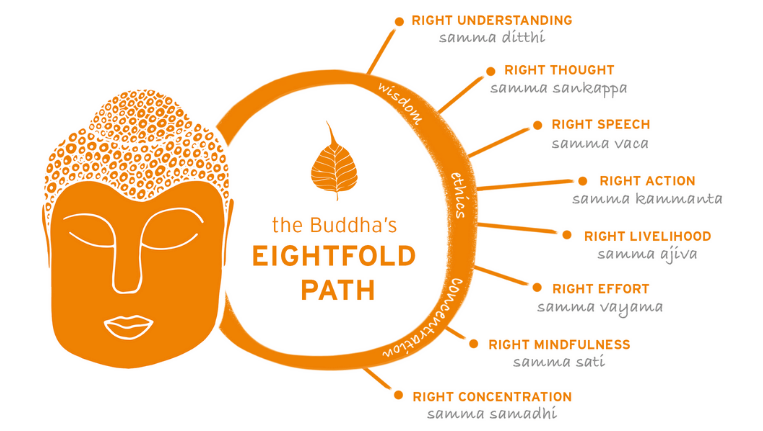
With the awakening, the most important learning for enlightenment unfolded – the Middle Path, which construes following a path which away from the extremes of self-indulgence and self-mortification. Buddha also emphasised realizing enlightenment on one’s own. After enlightenment, he is said to have spent 45 years of his life preaching and teaching in various parts of Uttar Pradesh, Bihar, and southern Nepal. Here are the pillars of Buddha’s teaching:
Three Jewels
The ideals of Buddhism are collectively known as the ‘Three Jewels’, or the ‘Three Treasures’. It is by making these the central principles of your life that you become a Buddhist. These are:
- The Buddha (the yellow jewel): The Buddha refers both – the historical Buddha and the ideal of Buddhahood itself. The whole Buddhist tradition derives from the historical Buddha and all schools regard him as their root founder, guide and inspiration.
- The Dharma (the blue jewel): Primarily it refers to the life teachings of the Lord Buddha. However, the word ‘Dharma’ has a number of meanings but most importantly it means the unmediated Truth. In this second sense, Dharma is the teaching that was born with the enlightenment of Buddha and were the communicated by him in the first sermon at Sarnath. The occasion is traditionally referred to as ‘the first turning of the wheel of the Dharma’, and the eight-spoked Dharma wheel is a common emblem of Buddhism.
- The Sangha (the red jewel): Sangha refers to spiritual community, in broader terms it refers to the people with whom we share our spiritual lives and experiences. According to Buddhist teaching, we all need other people to learn from, we need guidance as well as support and friendship of other practitioners. This is very important because Buddhism is not an abstract philosophy or creed; it is a way of approaching life and therefore it only has any meaning when it is embodied in people. If we are to practise the Dharma we need the example and teaching of others who have done so before us, especially those who have gained insight into the nature of reality themselves. So the third of the Three Jewels is the Sangha or the spiritual community.
The Four Noble Truths: First Wheel of Dharma
- Suffering: Buddha make one realizes that in life there’s always an involvement of suffering, in one form or the other.
- The Cause of Suffering: The cause of suffering is craving and ignorance, which construes that we suffer because of our mistaken belief, greed or may be ego.
- The End of Suffering: The good news is that our problems are temporary and the suffering can end as the awakened mind is always available to us.
- The Path: Buddha preached that by practicing meditation, developing wisdom, and following a disciplined life we can take a journey to enlightenment and freedom from suffering.
The two other Wheels of Dharma are Perfection of Wisdom Sutras and the Sutra Discriminating the Intention. While these teachings are the source of the Mahayana, or Great Vehicle, of Buddhism in which Buddha explains how to attain full enlightenment, or Buddhahood, for the sake of others; in the Hinayana teachings, Buddha explains how to attain liberation from suffering for oneself alone. Mahayana and Hinayana traditions both flourished in Asia, first in India and then to places like Tibet.
Threefold Way
Another important formulation of the path is the Threefold Way of ethics, meditation, and wisdom. It is discerned as a progressive path, as ethics and a clear conscience provide basis for meditation, on the ground of which wisdom can develop. The Threefold Way includes:
Ethics:
Buddha preached that to live is to act, and our actions have either harmful or beneficial consequences for ourselves and others around us. Buddhist core ethical code is known as the Five Precepts which are principles of training. The Buddhist tradition acknowledges that life is complex and comes with several difficulties. It suggests that not one single course of action can be right in all circumstance, however it deciphers the action not as right or wrong but speak being skilful (kusala) or unskilful (akusala).
Meditation:
Meditation is the second stage of the threefold way and as far as Buddhism is concerned, this stage had its significance from the time of Buddha and his journey to enlightenment.
Wisdom:
Buddha taught that the fundamental cause of human adversities is our existential ignorance. In order to abolish it, we need to hear and reflect on the teachings that indicate the Buddhist vision of life. Wisdom or Prajna means developing our own direct understanding of the truth.
The Noble Eightfold Path:
This can be assessed as the extended version of the Threefold Way and it is indeed an important and widely known Buddha’s teaching. Traditionally the teaching is seen as eight areas or ‘limbs’ of ‘right’ practice, which have a relationship to one other and are each essential element in an integrated approach to the Dharma:
- Right Understanding or Perfect Vision
- Right Resolve or Perfect Emotion
- Right Speech or Perfect Speech
- Right Action or Perfect Action
- Right Livelihood or Perfect Livelihood
- Right Effort or Perfect Effort
- Right Mindfulness or Perfect Awareness
- Right Meditation or Perfect Samadhi
Relevance of Buddhist Teachings in the Modern World:
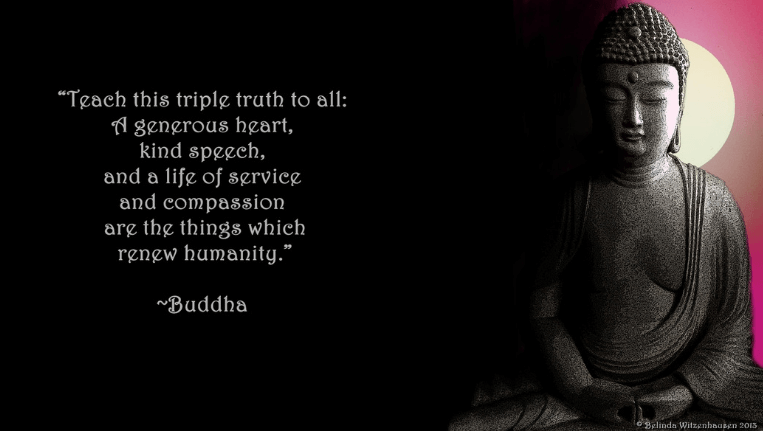
Buddhism has something to offer and is relevant in all times. According to Dalai Lama, “Buddhist science and Buddhist philosophy have a great deal to offer to everyone. We don’t need to look at, or be interested in, Buddhist religion in order to benefit from the teachings and insights that are available in Buddhist science and philosophy.” If it is observed, Buddhist science deals with human psychology; it is an in-depth analysis of how the mind, emotions, perception work. It also deals in the area of logic, and insights into cosmology. On the other side, Buddhist philosophy deals with reality – our comprehension of reality and how one can deconstruct fantasies and projections about reality. With a detailed study about this, one can find both Buddhist philosophy and science to be helpful in training the mind and developing a more beneficial attitude toward life. So even if someone does not accept Buddhist as a religion but learns to live according to its teachings can lead a happy and blessed life.
Contribution of the Buddha and Buddhism:
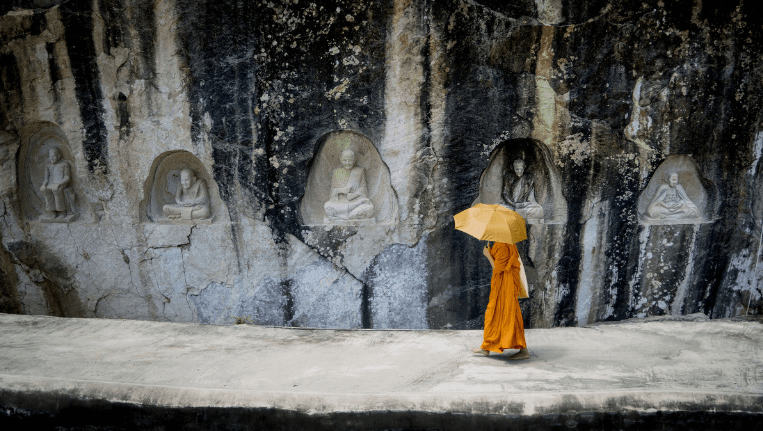
Buddha has been a prominent influencer in the history of ancient India. The life story of Buddha and his teachings helped the country undergo major social and political changes. The founder of Buddhism Religion has contributed significantly in shaping our constitution as well, here are what can be affirmed as the life achievements of Gautam Buddha:
National Unity:
Nothing brought Indian subcontinent closer in political and social field than Buddhism. The religion promoted a sense of national feeling amongst the Indians and it somehow shattered the dominance of the caste system which stood in the way of the achievement of this unity. It was mainly due to this unity and social harmony that the Mauryas could establish a powerful empire. This contribution of Buddhism has been recognized by E. B. Havell when he stated “In social and political sphere Buddhism has played the same role in cultivating a national spirit in India which Christianity did in 7th century to integrate the diversified elements of Saxon Hierarchy.”
Curb on the Violent Spirit:
Buddhism emphasized Ahimsa or non-violence, which greatly affected the people. It is well known that Emperor Ashoka, under the influence of Buddhism gave up on war and started to practice Ahimsa.
Contact with Outside World:
Buddhist religion in India became the first religion to go trans-border with the support of kings like Ashoka and Kanishka (majorly). The religion spread to countries like China, Japan, Mongolia, Myanmar, Indonesia, Tibet and Sri Lanka. According to J. N. Sarkar, “Due to the spread of Buddhism in foreign countries, foreigners considered India as a holy place and the sources of their religion. This contact with the outside world also promoted political and commercial relations with these countries.”
A Simple and Comprehensible Religion:
According to K. M. Panikar, “To the common man this (Buddhism) was indeed a new gospel. There were no secret mantras, no expensive yagas or sacrifices and indeed no difficult doctrines as in the Upanishads.” And thus, it turned out to be a religion that could be easily followed by the common people.
Added to the Morals and Values:
Buddhism came attached with lessons of morality, and directed people to practice virtues like charity, purity, self-sacrifice, truthfulness, control over passions, non-injury to living creatures in thought and action. It is not that these were not known to the people as they have been mentioned in the Upanishads but it was Buddhism that put these virtues in actual practice.
Education:
Buddhism made a significant contribution in the field of education also. The Buddhist Sanghas and Viharas served as centres of education for students from far off destinations, including foreign countries, came here to receive education. Nalanda, Taxila and Vikramshila which gained reputations as great educational centres were actually originally only Buddha Viharas.
Development of Art:
A commendable contribution in the field of art, architecture, sculpture could also be seen by Buddhism. The finest architecture example can be seen in the form of viharas, mandaps, yajnashalas, altars as well as stupas. It has to be noted that Buddhists were the first ones to erect cave temples. The method of the Buddhist art was of a continuous narration and the technique used was one of the memory picture.
Interesting Facts You Didn’t Know about Buddha and Buddhism:
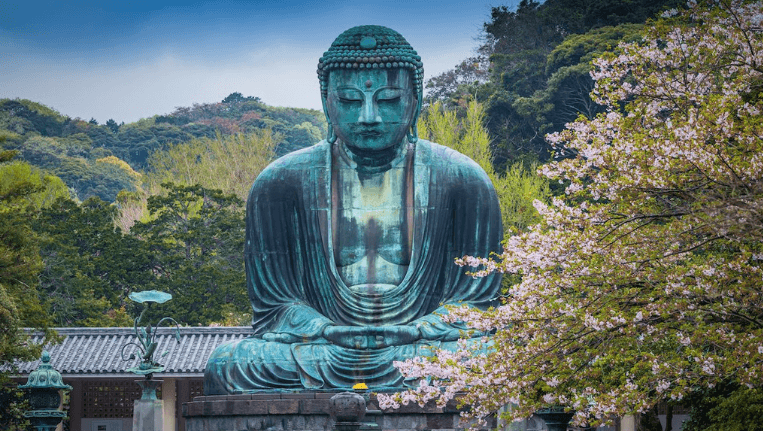
Buddha’s life and teachings have been splendid, and like any other prominent leaders his life also comprises some amazing and interesting facts about Buddhism religion and Buddha himself that there are chances you must have missed out on. Here’s a glimpse of some interesting facts on Buddha.
- The term ‘Buddhism’ was coined by Western scholars in the 1830s. Buddhists don’t actually refer to their religion as “Buddhism”
- With 360 million followers of Buddha, Buddhism is the fourth largest religion in the world.
- Buddhists don’t believe in a supreme being or creator god.
- Because of its emphasis on meditation and mindfulness, Buddhism is often considered to be a form of psychology rather than a religion.
- Buddha was not as chubby as many depictions of him would make it appear. He was portrayed this way as it symbolizes happiness in many countries in the east. In fact, Buddha is believed to practice moderation in all things – he fasted regularly, and spent most of his time walking miles teaching and preaching.
- Buddha’s spot of enlightenment underneath the bodhi tree is still preserved to this day.
- Buddha’s final request of his followers was “All component things in the world are changeable. They are not lasting. Work hard to gain your own salvation.”
- Buddha visited his son, father, his wife and his foster mother and the family is said to have joined the Sangha. His cousin Ananda and his son, Rahula became Buddhist monks, with Rahula being the youngest monk in the sangha.
Important Quotes by Buddha:
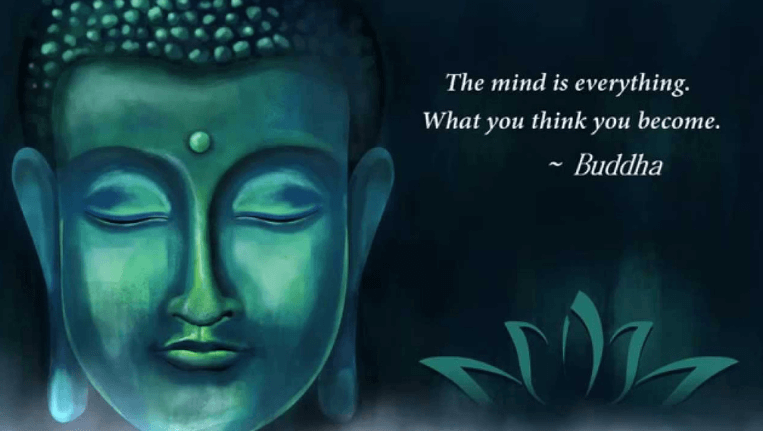
Life changing teachings of Buddha have been renown all around the world and the quotes by him are a major source of inspiration. Here are some of the famous quotes of Buddha that can also be asserted as inspirational quotes.
- “It is better to conquer yourself than to win a thousand battles. Then the victory is yours. It cannot be taken from you.”
- “If you knew what I know about the power of giving you would not let a single meal pass without sharing it in some way.”
- “Learn this from water: loud splashes the brook but the oceans depth are calm.”
- “I never see what has been done; I only see what remains to be done.”
- “You only lose what you cling to.”
- “The past is already gone, the future is not yet here. There’s only one moment for you to live.”
- “The trouble is, you think you have time.”
- “As you walk and eat and travel, be where you are. Otherwise you will miss most of your life.”-Buddha
- “Your work is to discover your work and then with all your heart to give yourself to it.”
- “Believe nothing, no matter where you read it, or who said it, no matter if I have said it, unless it agrees with your own reason and your own common sense.”
- “The tongue like a sharp knife… Kills without drawing blood.”
- “Teach this triple truth to all: A generous heart, kind speech, and a life of service and compassion are the things which renew humanity.”
- “Every human being is the author of his own health or disease.”
–Buddha
- “To abstain from lying is essentially wholesome.”
- “Avoid evil deeds as a man who loves life avoids poison.”
- “Holding onto anger is like drinking poison and expecting the other person to die.”
- “What you think, you become. What you feel, you attract. What you imagine, you create.”
- “Happiness will never come to those who fail to appreciate what they already have.” -Buddha
- “It is ridiculous to think that somebody else can make you happy or unhappy.”
- “When you realize how perfect everything is you will tilt your head back and laugh at the sky.”
Must Read Books on Buddhism and Buddha:
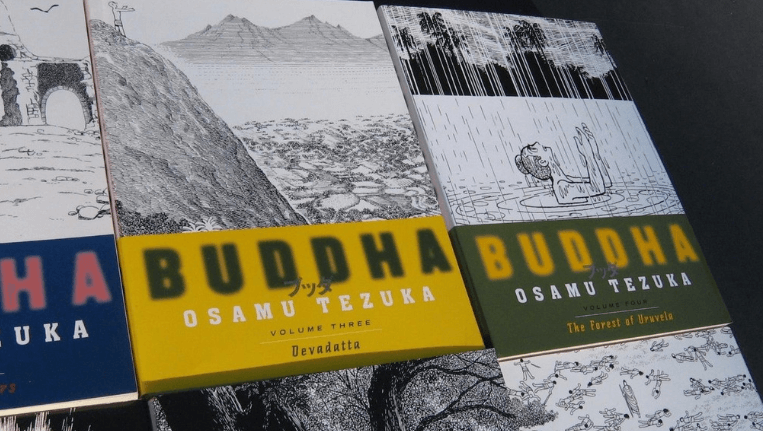
- After the Ecstasy, the Laundry by Jack Kornfield
- The Heart of the Buddha’s Teaching by Thich Nhat Hanh
- Real Happiness, by Sharon Salzberg
- On the Path to Enlightenment by Matthieu Ricard
- Zen Mind, Beginner’s Mind by Shunryu Suzuki
- A Beginner’s Guide to Meditation by Rod Meade Sperry
- When Things Fall Apart By Pema Chödrön
- Radiant Mind by Jean Smith
- Being Peace by Thich Nhat Hanh
- Cutting Through Spiritual Materialism by Chögyam Trungpa
Important Places in Buddha’s Life:
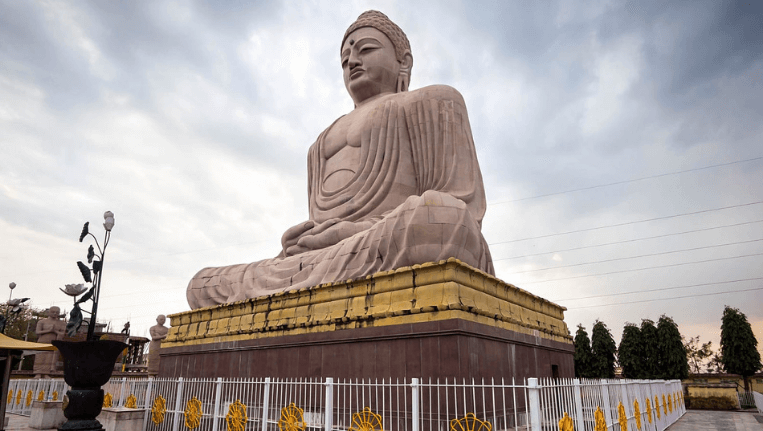
All through his 45 years of teaching and preaching life, Buddha is said to have travelled extensively. However, there are certain places associated with the life of Gautama that are also popular Buddhist sites in India and Nepal. Some of these Buddhist travel places in India and Nepal serve as important pilgrimage centres as well.
- Lumbini: Reckoned to be the birth place of Lord Buddha, this one is situated in modern day Nepal
- Bodhgaya: This place is in Bihar in India and is where is is believed to have attainment enlightenment under the Mahabodhi tree.
- Sarnath: The place is situated the famous destination of Varanasi in India, and is said to be the location of Buddha’s first sermon.
- Kushinara: This place is situated in Indo-Nepal border and is believed to be the location where Buddha breathed his last.
- Sravasti: This place in India is known as the destination where Buddha performed miracles.
- Rajgir: A destination in Bihar, it is supposedly the place where Buddha pacified a furious wild elephant.
- Sankassa: A place in India, it is believed where Buddha returned after preaching the Adidhamma in heaven.
- Vaishali: In India is a place where Buddha is reckoned to have set up the Bhikshuni Sangha.
Death of Buddha:

There are two theories regarding the death of Buddha. The first one being that Buddha can be someone who could live until the end of the world on condition that someone invite him to do so. He is someone who can fix the time of his own death. Since Ananda failed to invite him to live on to the age of the world or even longer, Buddha left the earthly realm.
The second and more practical story says that Buddha was ageing and was failing in health. He could have lost his life because of a severe pain during his last retreat at Vaishali. It is said Buddha came into terms with his unexpected illness and death after consuming a special cuisine offered by his generous host (Cunda the Blacksmith). However, Buddha instructed his attendant, Ananda to convince Cunda that the meal eaten at his place had nothing to do with the illness and that it is a source of the merit as it provided the last meal for a Buddha. Scholars, Mettanando and Von Hinüber suggest that the Buddha died of mesenteric infarction, a symptom of old age, rather than food poisoning. Buddha died on the night of the full moon in the lunar month of Visakha (which falls in May or June). His birth anniversary is referred to as Buddha Purnima. His final words are reported to have been: “All composite things (Saṅkhāra) are perishable. Strive for your own liberation with diligence.”
Buddha has been an important source for a radical change in Indian society. His teachings and his unique concept of self-realization are a building block in the Indian philosophy. There is just so much to learn about him and to take lessons of life from him that none of it can be justified in one single book and blog to say the least. This was just our humble endeavour to bring to you a glimpse of Buddha and his life, we are aware it can never do justice to the extraordinary life he spent and preached about. However, if you still found this piece helpful in some way, please let us know in the comment below. In case we weren’t really apt with information, you are most welcome to help us with it as well. You can find everything you need to know on Buddhist Pilgrimage tour to ancient Buddhist temples in India in this blog of ours here. So make sure give it a read too.
Published: 27 Dec, 2018
From the Lake District, Nainital, Nidhi Singh is a travel writer whose love for mountains can be seen in her write ups. Talk about solo travelling, indulging in adventure activities, binging on good food, planning budget trips or the Aurora Borealis and you will get all her attention. It is the wanderlust that keeps her going and if at all she could get one wish granted she would love to live a life less ordinary. Follow her on Twitter, Facebook & Instagram.



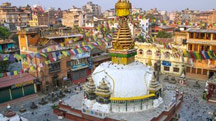 15 Nights / 16 Days
15 Nights / 16 Days  15 Nights / 16 Days
15 Nights / 16 Days 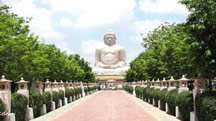 9 Nights / 10 Days
9 Nights / 10 Days 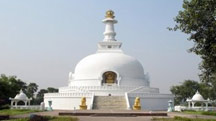 13 Nights / 14 Days
13 Nights / 14 Days 



















